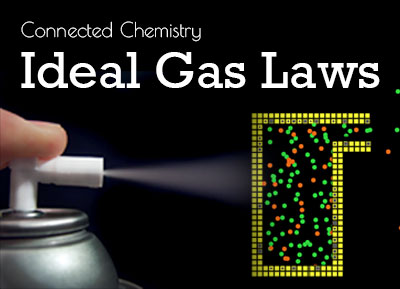
Overview
In this lesson, the students learn the basic assumptions of the Kinetic Molecular Theory (KMT) and how they help us conceptualize "pressure as a macro-level property that emerges from the micro-level interactions between many gas particles".
The lesson starts with the basic assumptions of KMT [1]:
1. The gas is composed of a large number of identical molecules moving in random directions, separated by distances that are large compared with their size.
2. Collision between gas particles occur like collisions between billiard balls (i.e. elastic collision). Otherwise, they do not interact. There are no attractive or repulsive forces between the particles.
3. Any energy the particles have is because of their motion only (i.e. kinetic energy).
4. These assumptions are simplifications that describe a theoretical "ideal gas". Most real gases behave qualitatively like an ideal gas.
The students reflect on the assumptions of the KMT and their own gas particle models from Lesson 1.
Then, the students are given an introductory definition of pressure. They are guided through an investigation of this definition using a simple NetLogo model of the bike tire. They observe the effects of adding particles through a valve on the pressure of the tire. They also consider the trade-offs of making simplifications when constructing models of systems.
The lesson ends with a "discrepant event" activity to stimulate transfer: "Can blow up a balloon inside a bottle?".
[1] The students are not expected to learn mathematical representations of the KMT as it is too complex for this grade level.
Underlying Pages
-
0. Student Directions -
Preview as Student
-
1. Kinetic Molecular Theory -
Preview as Student
-
2. The computational bike-tire model -
Preview as Student
-
3. What is pressure? -
Preview as Student
-
4. Discussion: What causes pressure inside the bike tire? -
Preview as Student
-
5. Stability, fluctuations, and change in pressure -
Preview as Student
-
6. Using models in scientific inquiry: simplifications vs. the real world -
Preview as Student
-
7. Applying our knowledge to another phenomenon: The balloon in the bottle experiment -
Preview as Student
Standards
Next Generation Science Standards
- Physical Science
- NGSS Crosscutting Concept
- NGSS Practice
Computational Thinking in STEM
- Data Practices
- Modeling and Simulation Practices
- Computational Problem Solving Practices
- Systems Thinking Practices
